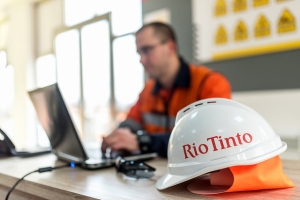


(Posted on 15/05/25)
Rio Tinto and its new partner Indium Corporation have successfully extracted the first primary gallium as part of a research and development project, which ultimately aims to produce commercial quantities of the critical and strategic mineral present in the bauxite processed in Rio Tinto’s Vaudreuil alumina refinery in Quebec, the only one in Canada.
This preliminary step was done in Indium Corporation’s research and development facility located in Rome, New York.
The next phase of the project involves the assessment of extraction techniques to enable the production of larger quantities of gallium at pilot-scale. If successful, Rio Tinto plans to build a demonstration plant in Saguenay-Lac-Saint-Jean, financially supported by the government of Quebec, with a capacity of up to 3.5 tonnes of gallium per year. The transition to a commercial-scale plant could see production reach 40 tonnes annually, representing between 5 and 10% of current world gallium production.
Jérôme Pécresse, Chief Executive, Rio Tinto Aluminium, said: ‘‘We are very proud to announce this significant milestone in our important research and development project to extract gallium from our aluminium operations in Quebec. Together, through this innovative partnership, Rio Tinto and Indium Corporation strive to strengthen the North American supply chain for gallium, a critical and strategic mineral.’’
Ross Berntson, President and Chief Executive Officer, Indium Corporation, added: “This achievement is a major milestone, reflecting our dedication to global industrial needs by ensuring a sustainable supply of gallium. Our joint efforts are positioning North America as a leader in critical material production.”
Primary gallium is used in key sectors including the manufacture of integrated circuits vital to modern technologies such as high-performance radar, smartphones, electric cars and laptops. Gallium is produced in limited quantities globally with only an estimated 600 metric tonnes per year, all from outside North America.
In addition to aluminium, copper, iron ore and titanium dioxide, Rio Tinto already produces a wide range of critical minerals in its North American facilities, including scandium used in aluminium alloys, tellurium for solar panels, lithium for EV batteries and molybdenum for steel alloys. Other research and development initiatives are ongoing to evaluate the possibility of extracting new materials from the company’s existing operations and reinforcing the supply chain for these materials.
The National Grain and Feed Association (NGFA) has applauded Senator Deb. Fischer’s (R-Neb.) reintroduction... Read more
Anglo American plc and Teck Resources Limited have received regulatory approval from the Government... Read more
The Rhodes Ridge Joint Venture has approved a $191 million (A$294 million) (Rio Tinto share $96 million... Read more
Trafigura Group Pte Ltd, a global leader in the commodities industry, has announced its financial results... Read more
Rio Tinto has successfully produced the first copper from the Johnson Camp mine in Arizona using its... Read more
The American Soybean Association’s World Initiative for Soy in Human Health programme and the... Read more
Karlka Nyiyaparli Aboriginal Corporation (KNAC) Registered Native Title Body Corporate and Rio Tinto... Read more
OCI Global, a leading global producer and distributor of nitrogen products has announced that it has... Read more
In December 2024, SSAB was granted a permit by the Land and Environment Court at Umeå District... Read more
The President of the Republic of Guinea has joined project partners WCS1, Baowu, Chinalco and Rio Tinto... Read more